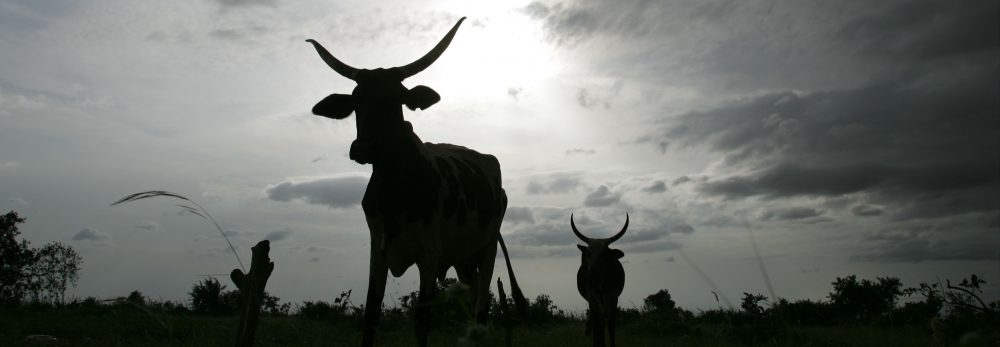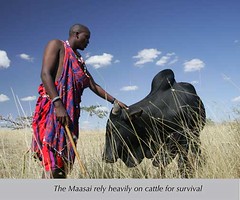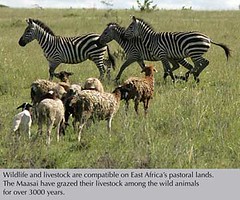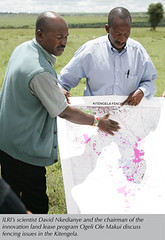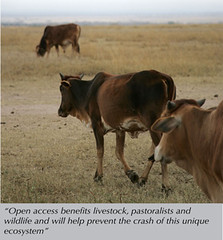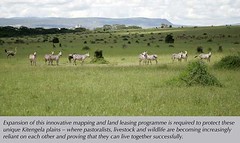Sometimes the answer to the question ‘Why?’ can come first from answering the question ‘Where?’
John Snow’s nineteenth century map of the incidences of cholera in London showed a cluster of cases around a particular water pump—which turned out to be a source of the outbreak. Now research groups have published maps showing the locations of African communities likely to be most vulnerable to the double threats of climate change and poverty. These maps, part of a 200-page report to the UK Department for International Development (DFID) published this month (August 2006) by the International Livestock Research Institute (ILRI), graphically show that there are many vulnerable regions of sub-Saharan Africa that are likely to be adversely affected by climate change. These include the mixed arid-semiarid systems in the Sahel, arid-semiarid rangeland systems in parts of eastern Africa, the systems in the Great Lakes region of eastern Africa, the coastal regions of eastern Africa, and many of the drier zones of southern Africa.
Poverty maps are nothing new. Philip Thornton, the senior author of this report and an agricultural systems analyst at ILRI, has previously led an ILRI team in developing maps of poverty and livestock in the developing world, which led to higher-resolution poverty maps being developed for Kenya and Uganda. These maps attempt to identify climate change – vulnerability hotspots in sub-Saharan Africa, to help DFID and other donors decide where they might locate specific research activities and where to put in place uptake pathways for research outputs.
These maps do not, like Snow’s water pump, disclose the causes of climate change or poverty, but they do provide aid agencies and policymakers with early warning about which African communities and farming systems are most in need of urgent attention to forestall future calamity.
As the world’s climate continues to change at an unprecedented rate, the impacts of climate change are likely to be considerable in Africa as well as other tropical developing regions. Many countries in sub-Saharan Africa currently have limited capacity to adapt to changing climate and increased probabilities of extreme events such as drought or flood.Considerable investments are needed to build local adaptive capacity so that countries are better able to respond to the challenges that climate change presents.
In partnership with the African Centre for Technology Studies and The Energy Research Institute, ILRI conducted a study commissioned by DFID to map climate vulnerability and poverty in Africa. ILRI published the results of this study in August 2006.
Several high-level governmental and inter-governmental papers and assessments are already using the ILRI-DFID study and resulting maps. These include report of a UK Foresight project on Detection and Identification of Infectious Diseases in April 2006, the July 2006 UK White Paper on International Development, and an August 2006 review draft of the IAASTD Global Report (International Assessment of Agricultural Science and Technology for Development). These reports stress that farmers in many places will need to adapt to climate change, by investing in alternative crops and livestock, adjusting their management regimes, or by diversifying their income-generating activities (particularly off-farm activities). Raising awareness about the possible impact of climate change, and improving consultation between all levels of government and civil society, will be essential.
The work has highlighted several key points. One is that there is such heterogeneity in household access to resources, poverty levels and ability to cope that vulnerability assessments increasingly need to be done at regional and national levels rather than the continental-level analysis written up here. Second, local responses to climate change need to be dynamic — adaptation to climate change needs to be seen as a dynamic and continuous process rather than as a one-off activity. Third, while climate change impacts may be considerable in particular places, it is only one of several elements that affect smallholders and their livelihood options. The interactions between climate change and human health, for example, are likely to have enormous consequences on livelihoods and will only add to the burdens of those who are already poor and vulnerable.
The result of the new study conducted for DFID is a book-length report published by ILRI in August 2006, Mapping Climate Vulnerability and Poverty in Africa.
To view the entire electronic version of the book, click to open:
- Mapping climate vulnerability and poverty in Africa. PDF (10.7MB)
To view the book by chapter, go to:
o Executive Summary
o Background
o Objectives and activities
o Framework
o Climate impacts in sub-Saharan Africa
o Poverty and vulnerability
o User needs
o Conclusions
o References and Acronyms
o Appendices
o Note 1: Indicators of adaptive capacity
o Note 2: South-south cooperation
o Note 3: Climate change & health in Africa: incidence of vector-borne diseases & HIV/AIDS
o Note 4: The climate, development, and poverty nexus in Africa
o Note 5: The Sub-Saharan Africa Challenge Programme
o Note 6: The ASARECA priority setting work
o Note 7: The SLP’s food-feed impact assessment framework
o Note 8: The SAKSS poverty targeting tool
o Note 9: Simulating regional production with crop models
